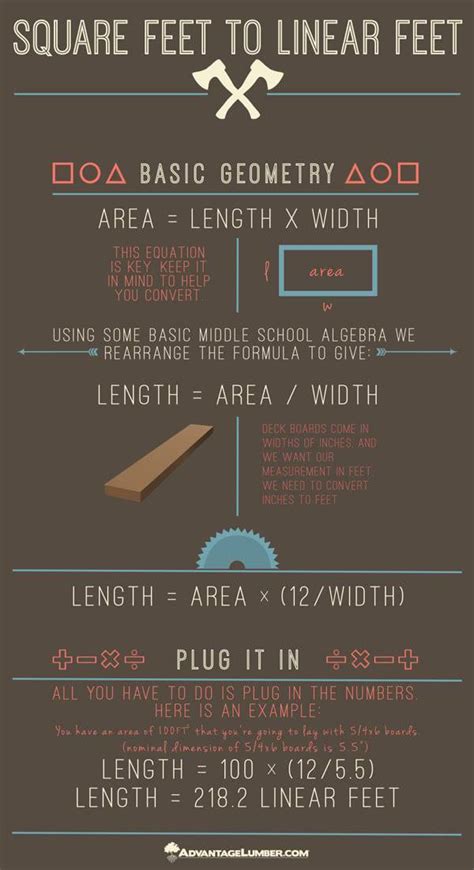Mastering Measurements: Linear Feet to Square Feet
Understanding the difference between linear feet and square feet is crucial for various tasks, from home improvement projects to calculating material needs for flooring or landscaping. While seemingly straightforward, the confusion between these two units often leads to costly mistakes and frustrating delays. This comprehensive guide will clarify the distinction, explain how to convert linear feet to square feet, and delve into common applications.
What are Linear Feet?
Linear feet simply measure length in a straight line. Think of it as measuring a single dimension. If you have a piece of wood that's 10 feet long, that's 10 linear feet. It's a one-dimensional measurement. You're only considering how long something is.
What are Square Feet?
Square feet, on the other hand, measure area. It's a two-dimensional measurement representing the space within a defined boundary. Imagine a square that's one foot wide and one foot long. That square has an area of one square foot. To find the square footage, you multiply the length by the width.
How to Convert Linear Feet to Square Feet
You can't directly convert linear feet to square feet without knowing at least one other dimension (width or length, depending on the shape). Linear feet only represent one side of a shape; you need a second dimension to calculate area (square feet). Here's how to do it for common shapes:
Rectangles and Squares:
This is the most straightforward conversion. To calculate the square footage of a rectangle or square, simply multiply the length (in linear feet) by the width (in linear feet):
Square Footage = Length (linear feet) x Width (linear feet)
Example: A room is 12 linear feet long and 10 linear feet wide. Its area is 12 ft x 10 ft = 120 square feet.
Triangles:
For triangles, the calculation is slightly different:
Square Footage = (1/2) x Base (linear feet) x Height (linear feet)
The base and height must be perpendicular to each other.
Circles:
Calculating the area of a circle requires using the radius (half the diameter):
Square Footage = π x Radius (linear feet)²
Where π (pi) is approximately 3.14159.
Common Applications of Linear Feet and Square Feet
Understanding the difference between linear feet and square feet is essential in various scenarios:
Home Improvement Projects:
- Flooring: You'll need to know the square footage of your floor to determine how much flooring material to purchase. You measure the length and width of each room in linear feet and then multiply them to get the square footage.
- Wall-to-wall carpeting: Similar to flooring, carpet is sold by the square yard or square foot, requiring area calculations.
- Painting: Calculating the paintable surface area (walls and ceilings) in square feet helps determine the amount of paint needed.
Landscaping:
- Sod: Sod is typically sold by the square foot or square yard. You need to calculate the area you want to cover in square feet to determine how much to buy.
- Pavers: Similar to sod, pavers require area calculations to determine the number of pavers needed for patios, walkways, or driveways.
Other Applications:
- Construction: Calculating the square footage of a building is vital for structural design and material estimations.
- Real Estate: Square footage is a critical factor in determining property value and size.
Frequently Asked Questions
How do I convert linear feet to square yards?
First, calculate the area in square feet as described above. Then, divide the square footage by 9 (since there are 9 square feet in a square yard).
Can I convert linear feet to cubic feet?
No, you cannot directly convert linear feet to cubic feet. Cubic feet measure volume (three dimensions: length, width, and height). You need all three dimensions to calculate cubic feet.
What if my space is irregular?
For irregularly shaped spaces, break the area down into smaller, regular shapes (rectangles, triangles, etc.). Calculate the area of each shape separately and then add the areas together to get the total square footage.
What tools can help with these calculations?
Many online calculators can help with these conversions. Simply search for "linear feet to square feet calculator" or a calculator specific to the shape you are measuring. You can also use standard measurement apps on smartphones and tablets.
By understanding the difference between linear feet and square feet and mastering the conversion techniques, you'll be well-equipped to tackle your next project with confidence and accuracy. Remember, paying attention to these details can save you time, money, and a lot of frustration!

